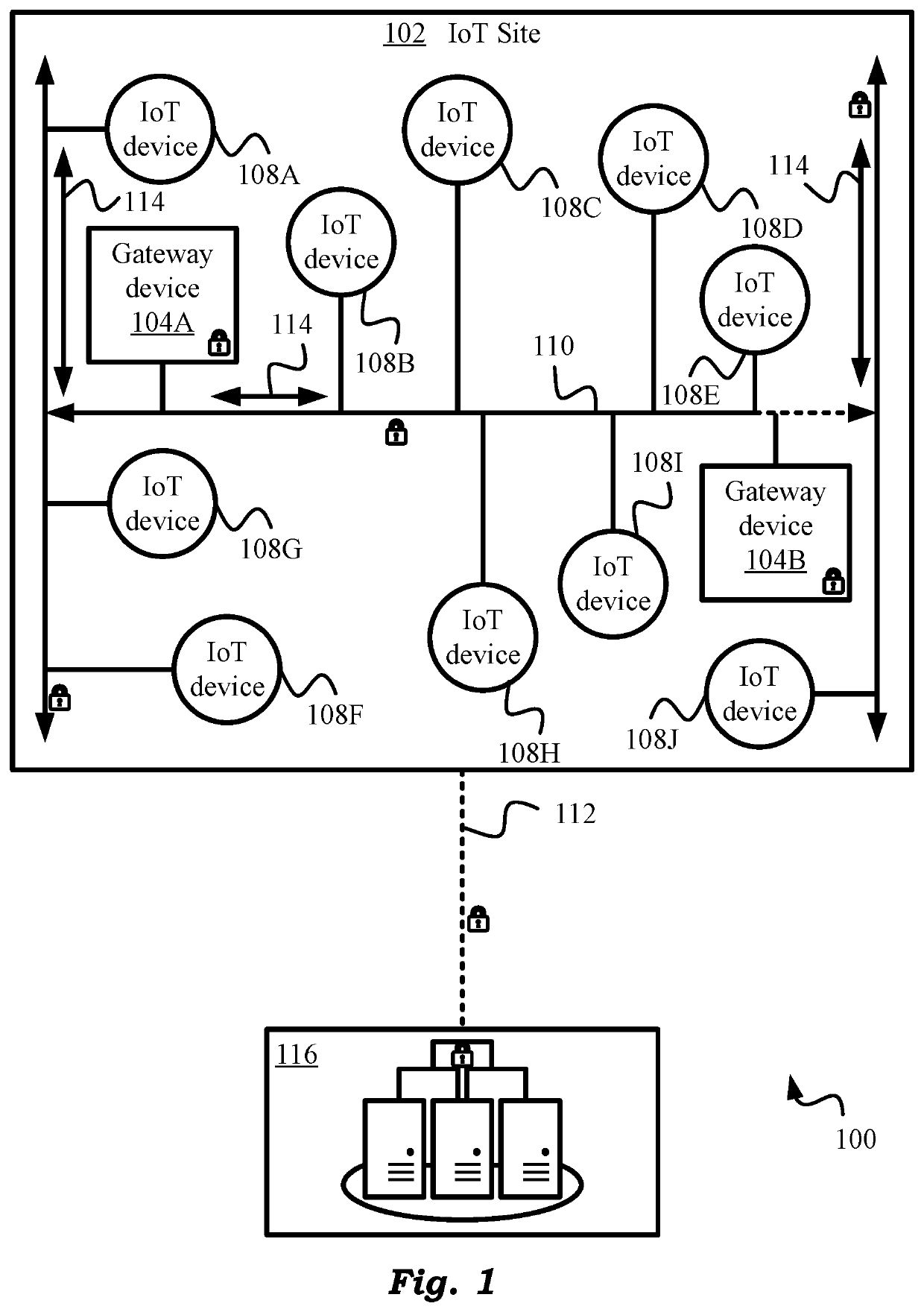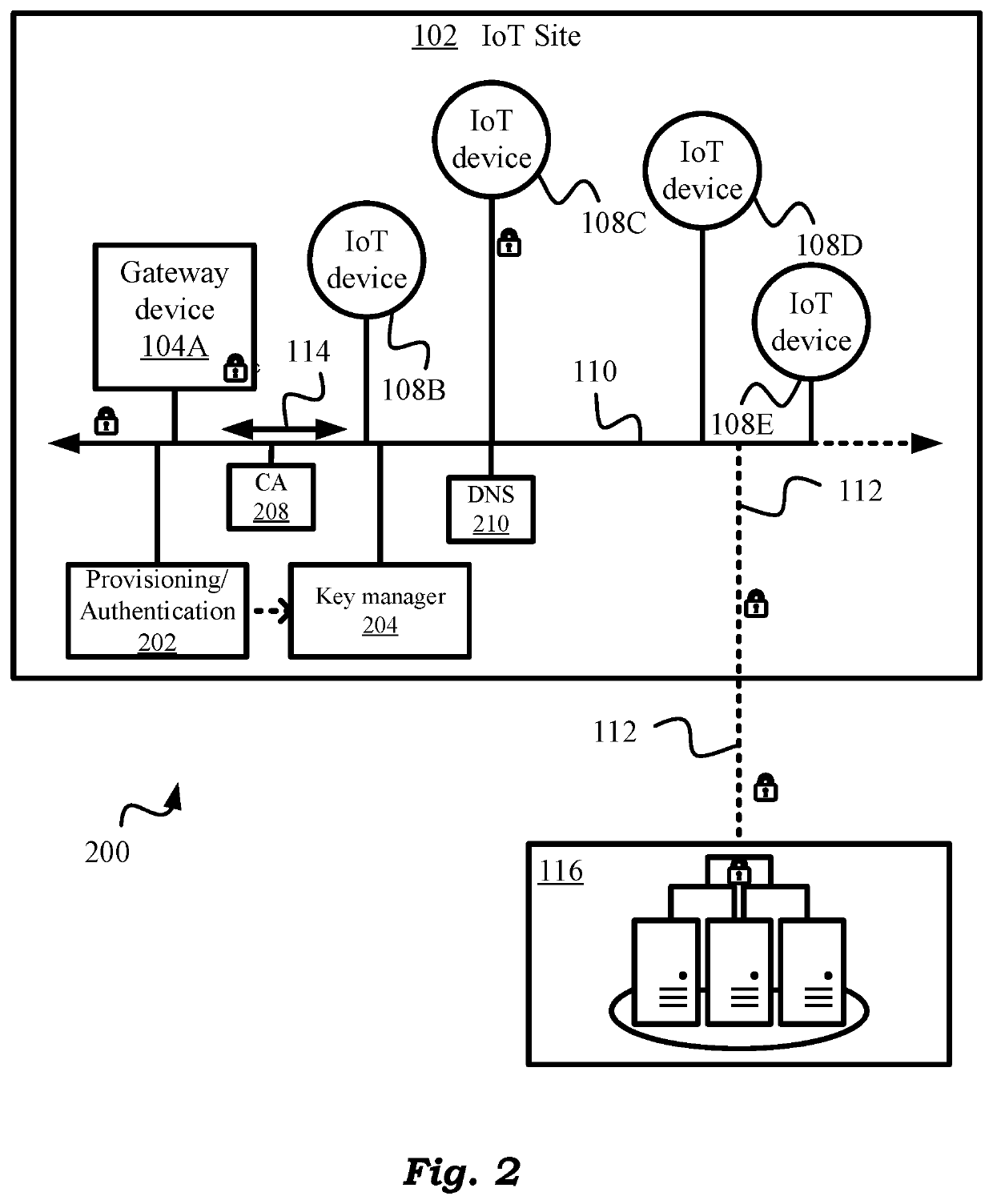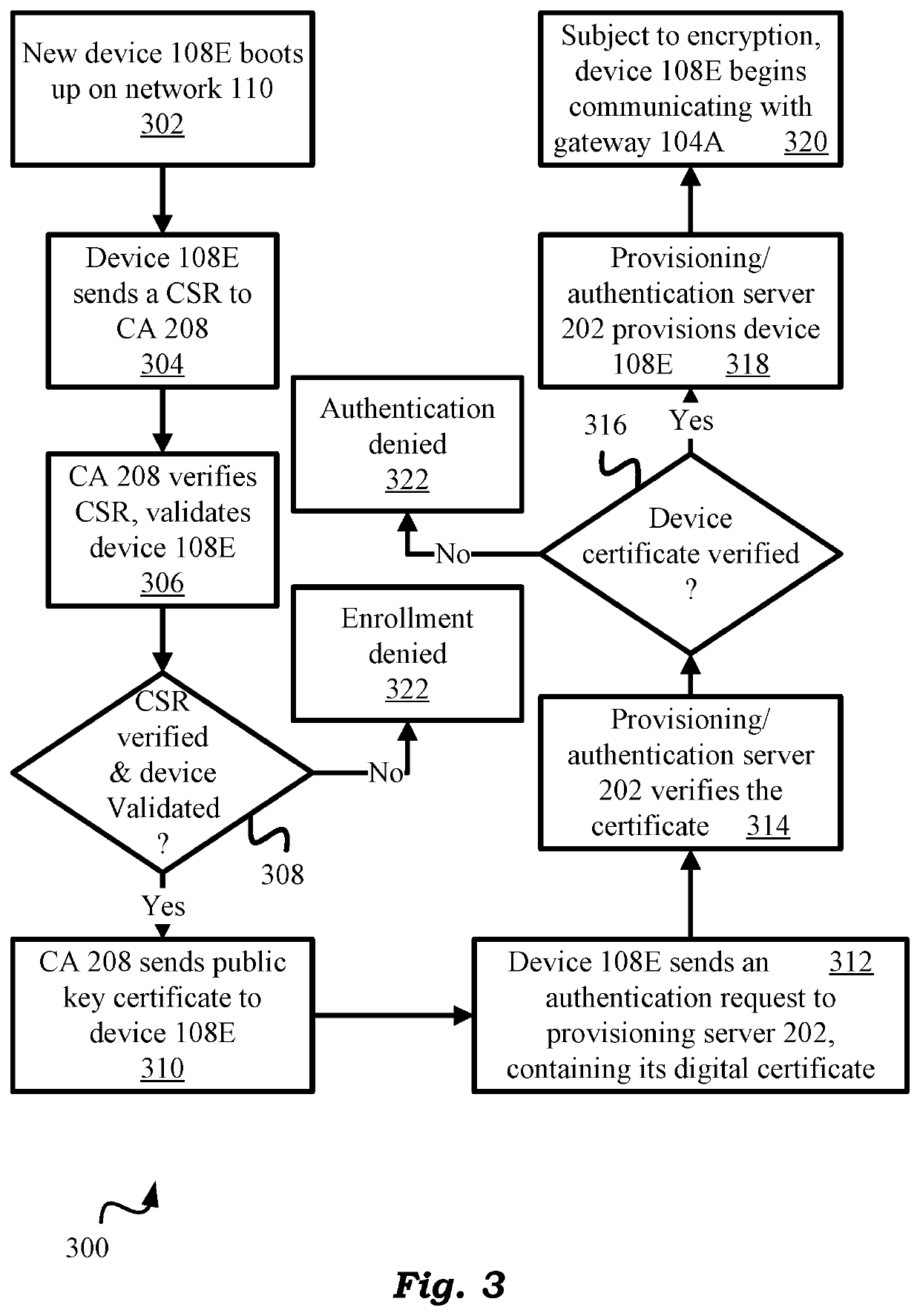Efficient Internet-Of-Things (IoT) Data Encryption/Decryption
a technology of internet of things and data encryption, applied in the field of cybersecurity, can solve problems such as open to potential attacks, and achieve the effect of reducing the computational burden of the infrastructure and preventing exposur
- Summary
- Abstract
- Description
- Claims
- Application Information
AI Technical Summary
Benefits of technology
Problems solved by technology
Method used
Image
Examples
embodiment 100
[0054]The present invention will be best understood by first reviewing systems and methods for securing data-at-rest in a secure IoT environment as illustrated in FIG. 1. Embodiment 100 of FIG. 1 shows an internet of things or internet-of-things (IoT) site or environment 102 that contains a variety of IoT devices or endpoints or edge devices 108. Any number of IoT edge devices 108A, 108B, . . . are permitted at site 102. Their number may be in the dozens, hundreds, thousands or even more depending on the implementation. There are also a number of IoT gateway devices 104. Any number of such IoT gateway devices, or simply gateway devices, or even more simply gateways are possible. Two such gateways 104A and 104B are explicitly shown in FIG. 1.
[0055]IoT environment or site 102 can be practically any environment or location or site, stationary or moving, terrestrial or extra-terrestrial, where IoT devices 108 are deployed. Exemplarily, site 102 can be an oilrig where IoT devices / sensors...
embodiment 200
[0064]Let us now look in greater detail at how the instant design accomplishes its “encrypt-decrypt-once” objectives. As shown in the block diagram of a preferred embodiment 200 of FIG. 2, there is a provisioning / authentication module or server 202 and a key manager module or server 204. Provisioning / authentication module / server 202 is responsible for authentication and provisioning of devices on network 110. Let us now look at the functionality of this module / server in greater detail.
Provisioning / Authentication
[0065]IoT device provisioning consists of the following key functions performed by module 202.
Provisioning Tasks:
[0066]1. Authenticating each device and establishing its initial connection on network 110.[0067]2. Applying proper configuration to the device based on the specific requirements of IoT site 102.
[0068]As noted, the above tasks are performed by provisioning server 202. Per task (1) above, a new device must be authenticated on network 110 before its connection to the...
embodiment 350
[0102]FIG. 4 shows the conceptual diagram of present embodiment 350 in a pictorial form. Specifically, new edge device 108D authenticates itself using a public key (PK) certificate with provisioning / authentication server 202 as shown by bubble 352. If the device is authenticated, server 202 sends device 108D a per-device key per above as shown by bubble 354. Device 108D then uses this key in a SCRAM protocol to verify its authenticity with key server 204. This is shown by bubble 356. After such authentication, and as shown by bubble 358, key server 204 can now issue an EDK to device 108D.
[0103]From its EDK, the device can derive its DEK for encrypting its IoT data 114 for local storage or transmission to gateway 104A as shown. Like the prior embodiments, the present embodiment also benefits from the encrypt-decrypt-once design of the present technology to encrypt IoT data 114 only once with its DEK while storing it locally or transmitting it to the gateway. The present design thus e...
PUM
 Login to View More
Login to View More Abstract
Description
Claims
Application Information
 Login to View More
Login to View More - R&D
- Intellectual Property
- Life Sciences
- Materials
- Tech Scout
- Unparalleled Data Quality
- Higher Quality Content
- 60% Fewer Hallucinations
Browse by: Latest US Patents, China's latest patents, Technical Efficacy Thesaurus, Application Domain, Technology Topic, Popular Technical Reports.
© 2025 PatSnap. All rights reserved.Legal|Privacy policy|Modern Slavery Act Transparency Statement|Sitemap|About US| Contact US: help@patsnap.com



